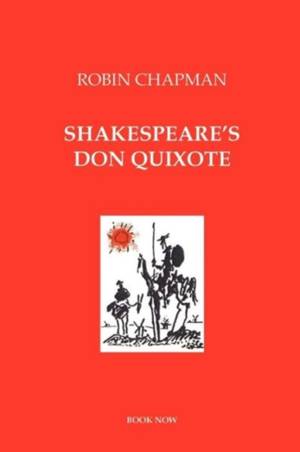
- Afhalen na 1 uur in een winkel met voorraad
- Gratis thuislevering in België vanaf € 30
- Ruim aanbod met 7 miljoen producten
- Afhalen na 1 uur in een winkel met voorraad
- Gratis thuislevering in België vanaf € 30
- Ruim aanbod met 7 miljoen producten
Zoeken
Omschrijving
SHAKESPEARE'S DON QUIXOTE recreates what might have been: a lost play presented at Whitehall Palace in 1613. That year Shakespeare's company provided 14 plays for a royal wedding. One was called Cardenio. The original script has never been found but an 18th century version, retitled Double Falsehood, may contain echoes of their work together. Cardenio's story occurs in Don Quixote, Cervantes's universal best-seller, wherein the vexed teenager protagonist encounters the would-be knight errant and his sceptical squire. If Shakespeare's attention was drawn to the story's dramatic potential it seems likely it would have featured Don Quixote and Sancho Panza, since by that time Cervantes's double act was appearing on stage and in carnivals worldwide. Acting upon this hypothesis Robin Chapman's novel plays out today in a theatre of the mind. Among the audience the reader will find the attentive spirits of Shakespeare, Fletcher and Cervantes who soon become involved with each other and in the performance.
Specificaties
Betrokkenen
- Auteur(s):
- Uitgeverij:
Inhoud
- Aantal bladzijden:
- 228
- Taal:
- Engels
Eigenschappen
- Productcode (EAN):
- 9780950671512
- Verschijningsdatum:
- 18/04/2011
- Uitvoering:
- Paperback
- Formaat:
- Trade paperback (VS)
- Afmetingen:
- 152 mm x 229 mm
- Gewicht:
- 340 g

Alleen bij Standaard Boekhandel
+ 39 punten op je klantenkaart van Standaard Boekhandel
Beoordelingen
We publiceren alleen reviews die voldoen aan de voorwaarden voor reviews. Bekijk onze voorwaarden voor reviews.











